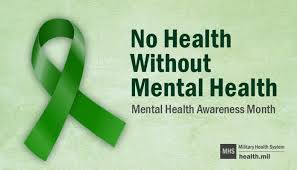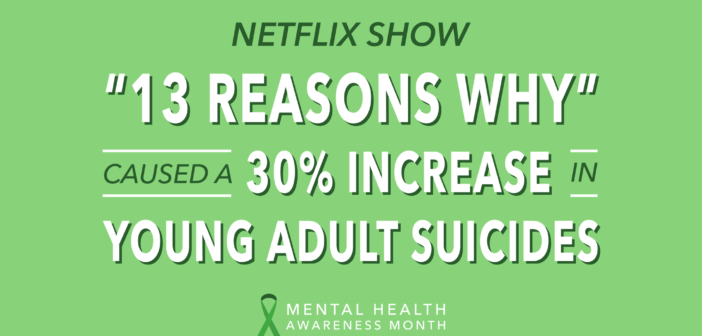Are the media playing a role in increasing the number of teen suicides?
The TV show “13 Reasons Why” has been under scrutiny for its portrayal of sensitive topics, specifically instances of rape and suicide.
According to a recent study from the Journal of American Academy of Child and Adolescent Psychiatry, there was a 28.9% increase in suicide rates among U.S. youth ages 10-17 in the month of April 2017 when the show was released.
The show “13 Reasons Why” focuses on the main character Hannah Baker. After undergoing intense issues in her life, she decided to take her own life. The show did not spare viewers and provided an in-depth display of both suicide and sexual abuse. For many, the scenes were so graphic they had to skip past them.
Photo labeled for reuse
“The number of deaths by suicide recorded in April 2017 was greater than the number seen in any single month during the five-year period examined by the researchers … the suicide rate was primarily driven by the significant increases in suicide in young males,” said the National Institute of Mental Health.
While it may be difficult to directly place a cause and effect relationship between the show and an increase in deaths, the risks of media portrayal are very important. Some viewers praised the show for shedding some light on the growing traumatic and dangerous experiences teens are facing, such as bullying, sexual abuse and self-harm. Others, however, found the depiction of suicide inaccurate and possibly dangerous.
Paul Mullen, half-time associate professor of psychology and neuroscience, said it has been a topic he’s been seeing a lot in the media.
“I remember there being a lot of concern about it when it first came out. So much concern that professional organizations and school psychologists put out a letter saying they recommend not watching it. Then, of course, everyone wanted to watch it even more,” said Mullen.
The idea that people will model what they see in the media is a concept that has always been around. The discussion has been especially prevalent when talking about violence in things like video games or even professional wrestling.
But are other professionals concerned about a connection between modeling depression or suicidal ideologies?
One concern is that young people will sometimes glorify the idea of suicide.
“I’ve known kids in high school where a peer has died from suicide. They didn’t even announce it formally, which I think was the wish of the parents,” said Mullen. “Then there are other ones where the kids are wearing buttons at school with the face of the person. You can see that the intentions of the kid were good, but an adolescent who isn’t in their right mind would see that as an appealing outcome. There has to be a happy meeting somewhere.”
Mullen said that there could be a net positive from the whole situation. If parents are opening up a dialogue or even sitting and watching it with them, there could be positive conversations that would make talking about mental health issues that could arise later easier.
“Someone who is thinking, I’m depressed, my life sucks … I can run away, I could ask my parents to take me to a therapist, all the good, bad and in between,” said Mullen. “Like it or not when they see someone who makes that choice (suicide), that choice gets put on their list. And for that reason, they are at risk.”
According to Mullen, a study conducted showed that kids who watched the entirety of both season one and two had a decreased likelihood of suicidal tendencies. Part of this may deal with a sense of “resolution” in season two. The show is also in production for the third season that is set to come out later this year.
After facing controversy over their first season, the show had an increase in resources available to viewers.
According to the article “Here’s What 7 Mental Health Experts Really Think About ‘13 Reasons Why,’” the show released a PSA featuring cast members and “Beyond the Reasons” that delved into the sensitive scenes.

Photo labeled for reuse
“Netflix producers also collaborated with suicide prevention groups to beef up the crisis resources available on 13reasonswhy.info, including a new viewing discussion guide (you can see last year’s here) created in collaboration with the American Foundation for Suicide Prevention (AFSP), which put out its own guide last year.”
If it needs this many resources, is that a good thing or a bad thing?
Beyond both professionals and producers placing a content warning on this material, there has been a backlash from younger individuals as well. The article titled “’13 Reasons Why Not’ takes a positive spin on controversial Netflix show” describes a school in Oxford, Michigan, that launched a program called “13 Reasons Why Not” shortly after the release of the show.
“The project is inspired by the Netflix show — except, instead of recording tapes targeting people who led them to a dark place, the students are calling out people who helped them out of one,” said Morgan.
So while these teens created a conversation, for others it may be the opposite.
According to the National Alliance on Mental Illness (NAMI) the show violated a specific set of guidelines that ReportingOnSuicide.org created by showing the suicide on screen.
“Research has extensively shown that the way media covers suicide can lead to greater suicide risk,” said Greenstein.
A lot of it has to do with the idea that suicides happen in a contagion-type pattern.
“The notion of what they call suicide contagion has always been, prior to this, thought of like a misnomer. The notion of the copycat suicide and people saying that it’s like a shark attack because it seems like they’re coming in groups. Really, it’s because we are more alert and paying closer attention,” said Mullen.
May is suicide awareness month. With this comes the continuing conversation that the stigma associated with mental health issues is not only incredibly problematic, but it’s dangerous. Teen suicide rates continue to rise, especially for young males. Males often opt for more lethal means, therefore having a higher success rate.
Schools are becoming a center for helping to address this growing concern with young adults. The media have a continuing role in creating a healthy perspective toward mental health because young teens are at an incredible risk of suicidal tendencies.
“Every parent of suicide is thinking, ‘why didn’t they just come downstairs and tell me what was wrong?’,” said Mullen.

